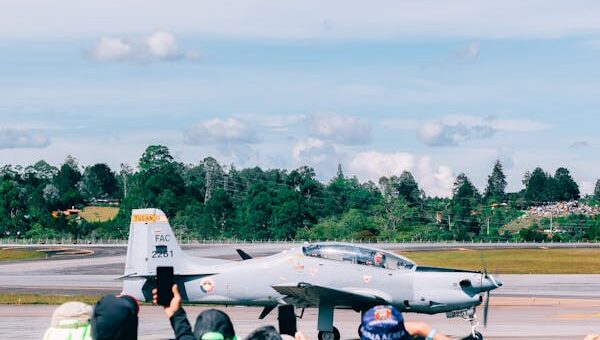
Introduction
As nations ramp up investments in air superiority, a new wave of military jets is poised to revolutionize aerial warfare. These aircraft feature stealth capabilities, artificial intelligence (AI), advanced sensors, and hypersonic performance that were once the stuff of science fiction. In this comprehensive guide, we explore the top upcoming military jets that will dominate the skies in the 2030s and beyond.
1. The Sixth Generation Fighter Revolution
1.1 Defining Sixth-Generation Jets
Sixth-generation fighter jets represent the next major evolution in air combat, going beyond the capabilities of today’s fifth-generation platforms like the F-22 Raptor and F-35 Lightning II.
Key Features:
- Full-spectrum stealth
- Manned-unmanned teaming
- AI-enhanced decision-making
- Directed-energy weapons
- Modular design for mission adaptability
These jets are expected to operate in contested environments, conduct electronic warfare, and command a network of drones.
1.2 Design and Development Trends
Defense contractors and air forces are focusing on digital design, rapid prototyping, and next-gen materials.
Emerging Trends:
- Open mission systems for quick software updates
- Optional manning: Piloted or autonomous modes
- Integrated sensor fusion for 360° situational awareness
As timelines accelerate, we may see operational sixth-gen fighters entering service by the mid-to-late 2030s.
2. United States: Leading the Charge
2.1 NGAD (Next Generation Air Dominance)
The U.S. Air Force’s NGAD program is among the most ambitious future fighter initiatives. It aims to field a family of systems including a core fighter, drones, and supporting technologies.
Key NGAD Concepts:
- Expendable and reusable loyal wingman drones
- Adaptive-cycle engines for increased range and efficiency
- Low-observable airframes with integrated networking
Lockheed Martin, Boeing, and Northrop Grumman are top contenders involved in classified phases of development.
2.2 Navy’s F/A-XX Program
The U.S. Navy is developing its own sixth-generation fighter under the F/A-XX program to replace the F/A-18E/F Super Hornet.
Expected Capabilities:
- Maritime stealth
- Long-range air dominance
- Supercruise and electronic warfare
The F/A-XX will complement the F-35C and operate from next-gen aircraft carriers.
3. Europe’s Collaborative Fighter Programs
3.1 FCAS (Future Combat Air System)
Jointly led by France, Germany, and Spain, FCAS is Europe’s most advanced military aviation initiative.
Program Highlights:
- Sixth-gen manned fighter jet (NGF)
- Remote Carrier drones for cooperative missions
- Air Combat Cloud for digital warfare
Airbus and Dassault Aviation are primary contractors. FCAS aims for an in-service date around 2040.
3.2 Tempest (UK, Italy, Sweden, Japan)
The UK-led Tempest project is a multi-nation sixth-generation fighter effort with global ambitions.
Tempest Features:
- AI-enhanced pilot support
- Directed energy and hypersonic weapons
- Reconfigurable cockpits
The UK has recently partnered with Japan and Italy to develop a merged program now known as GCAP (Global Combat Air Programme).
4. Asia’s Advancing Aerospace Power
4.1 China’s J-20 Evolution and J-31 Developments
China’s Chengdu J-20 is already operational, but further developments are expected over the next decade.
Improvements Underway:
- New WS-15 engines for supercruise
- Stealth enhancements and expanded weapons bays
- Potential sixth-gen prototypes in early R&D
The Shenyang J-31 (FC-31) is also evolving, likely intended for carrier-based roles.
4.2 India’s AMCA Program
India’s Advanced Medium Combat Aircraft (AMCA) is set to be its first indigenous fifth-generation fighter.
Key Characteristics:
- Twin-engine stealth platform
- Supermaneuverability and sensor fusion
- Indigenous avionics and weapons systems
AMCA’s first flight is targeted for the early 2030s, with HAL and DRDO leading the effort.
5. Technology Drivers Behind the Jets
5.1 Stealth and Survivability
Next-gen jets are evolving beyond radar stealth to include infrared and electromagnetic signature management.
Enhancements Include:
- Radar-absorbent materials (RAM)
- Edge-aligned designs and internal bays
- AI-based threat evasion algorithms
Modern jets will be hard to detect and even harder to track in high-threat environments.
5.2 Digital Integration and Autonomous Operations
Data is becoming the battlefield currency. Upcoming jets will serve as airborne command nodes.
Integration Examples:
- 5G-level data sharing across platforms
- Loyal wingman drones acting semi-autonomously
- Cognitive electronic warfare systems
Future fighters will not only fight but also compute, analyze, and command missions in real time.
Conclusion: The Jet-Powered Future Awaits
The upcoming military jets of the next decade signal a seismic shift in global airpower. With cutting-edge stealth, AI, and weapon systems, sixth-generation aircraft promise unmatched combat capabilities and strategic reach.
As the U.S., Europe, and Asia compete to dominate the skies, the results will redefine modern warfare. These jets aren’t just about speed or stealth—they are about data superiority, multi-domain integration, and networked lethality.